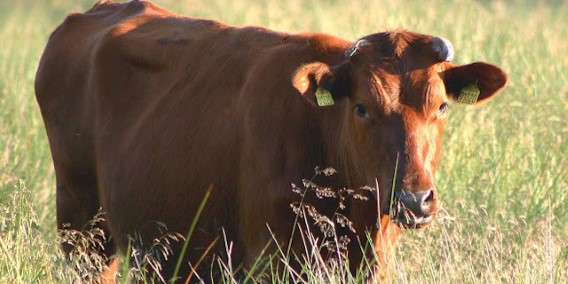Danish Red (also known as Red Dane, Red Danish, Rodt Dansk
Malkekvog, and Funen ) cattle are a very important and major breed of dairy
cattle in northern Europe. They are raised for both milk and meat production.
They were developed in Denmark based on local cattle breeds bred with Angeln
cattle form Angeln, Schleswig.
They have been imported to many other countries throughout
the world. They have been used for improving many other local breeds such as
Estonian Red, Latvian Red, Belarus Red, Lithuanian Red, Polish Red, Bulgarian
Red, Tambov Red, or Russian Red cattle. They are also popular for crossbreeding
in tropical countries. Their solid red color has helped make them popular for
crossbreeding in the tropical countries with red Zebu dairy breeds like Butana,
Red Sindhi, and Sahiwal cattle.
They are noted for their milk production, and the cows can
produce very good quality milk. They can also be used as a beef breed once they
have finished their useful lifetime. They accounted 61 percent of Danish cattle
stock in the early 1960s, and this number had declined to a little over 20
percent by the early 1980s. Today there are over 42,599 pedigree cows in
Denmark.
Danish Red cattle are medium to large sized. Their coats are
usually one solid color, red, with little variation. The bulls often have a
much darker red tinge. Both bulls and cows usually may have small horns. The
cows show a typical dairy conformation and they have good sized and
well-developed udders. Average live body weight of the mature cows is around
660 kg. The bulls are much larger than the cows. And average live body weight
of the mature bulls is around 1000 kg.

